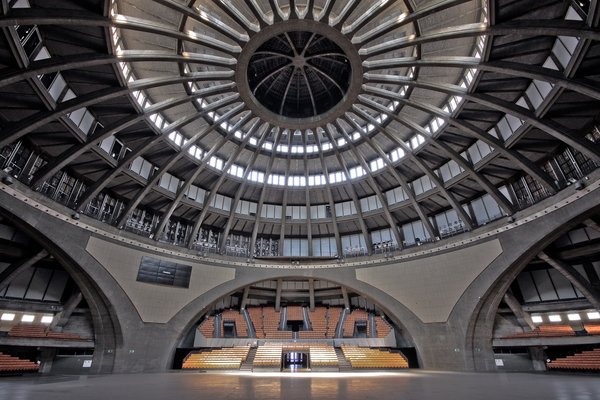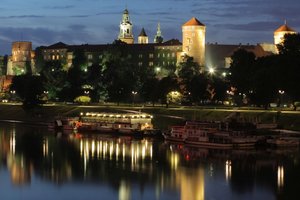Centennial Hall in Wrocław
One of the 10 most important examples of 20th-century modernism according to the American Getty Foundation, the Centennial Hall is one of the major monuments of Wrocław.
'The fact that the Centennial Hall made it to this list is a great honour. It is of no surprise to me, because it is a breakthrough facility in the history of architecture,' said Marcin Szczelina, an architectural critic, for Polska.pl. 'A hundred years ago, its form, structure and materials used, broke the structural constrictions of the time. Even today, it is a subject of research on the architecture of that era,' he adds.
In October, the American Getty Foundation awarded two-hundred thousand dollars to conserve the Wrocław's Centennial Hall. Apart from the Wroclaw monument, financial support was granted to nine other gems of 20th-century modernism: Sydney Opera House, Le Corbusier's apartment and studio in Paris or Frank Lloyd Wright's Robie House in Chicago and Eames House in Los Angeles.
The Centennial Hall was built in 1913, for the one hundredth anniversary of the allied defeat of Napoleon, as a place for exhibitions presenting the history and commercial output of Silesia. Constructed in 1911-13 between Szczytnicki Park and a zoo, it was intended for holding mass events. An innovative concept of the urban construction specialist, Max Berg, won the contest, which – even though it was expensive and unlike anything in existence at the time – was appreciated the most among the 43 submitted entries.
 Berg designed a building devoid of the decorations that were so characteristic of the 19th-century architecture, in order to emphasize the truth of the material used to construct the 42-metre-high hall – reinforced concrete. Light and resilient, with great technical parameters, but at the beginning of the 20th century people were afraid that it would fall down.
Berg designed a building devoid of the decorations that were so characteristic of the 19th-century architecture, in order to emphasize the truth of the material used to construct the 42-metre-high hall – reinforced concrete. Light and resilient, with great technical parameters, but at the beginning of the 20th century people were afraid that it would fall down.
Natives of Wroclaw did not understand why Berg did not care to use steel, as many of his predecessors had done. However, they did admire the monumental character of the 42-metre-high structure modeled on famous Gothic structures, with the biggest dome in existence at the time (65m in diameter), that overshadowed Rome’s Pantheon. They were proud that a world-class building was being constructed in their city. The concrete used to construct the building from the Opole's Silesia concrete plant was subjected to strict tests. Areas that were to carry significant loads were strengthened with a resilient granite from Strzegom, and the windows were made of ironwood that was imported from Australia.
The outcome was admired the grand opening on 20 May 1913 by Frederick William, Ernst Gunther, Duke of Schleswig-Holstein and other major personalities of Wrocław. Apart from the Hall, the guests visited the Four Domes Pavilion designed by Hans Poelzig, the Pergola and the recreation facilities. They also admired the Japanese Garden designed by duke Fritz Maximilian von Hochberg, with the assistance of a Japanese gardener, Mankichi Arai.
They were impressed by the largest pipe organ in the world at the time – with 222 registers and 16,706 pipes, designed by Sauer, a famous Frankfurt-based company. Today, pieces of the pipe organ are stored in Wrocław's Archcathedral, and some pipes – in the Częstochowa's Basilica in Jasna Góra.
Before World War II, the Hall was the venue for speeches given by major officers of the Nazi Party, including Adolf Hitler. The Hall survived World War II without sustaining major damage. Only the pipe organ was put in disrepair.
In the People's Republic of Poland, the Hall was opened in 1948 with an Exhibition of Regained Territories. A steel spire, built especially for that occasion and designed by Stanisław Hempel, survives until today.
In 2006 the Centennial Hall was listed as a UNESCO World Heritage Site. Restoration was completed in 2010. It cost 200 million zlotys to renovate the facility and its surroundings. Another renovation is being planned. With the consent of UNESCO, the renovation would include a lowering of the floor in order to increase audience capacity – from seven to ten thousand people – so that the venue would be able to host more people at upcoming major sporting events. In 2014 Wroclaw hosted the World Volleyball Championships.
KAROLINA KOWALSKA
11.12.2014







